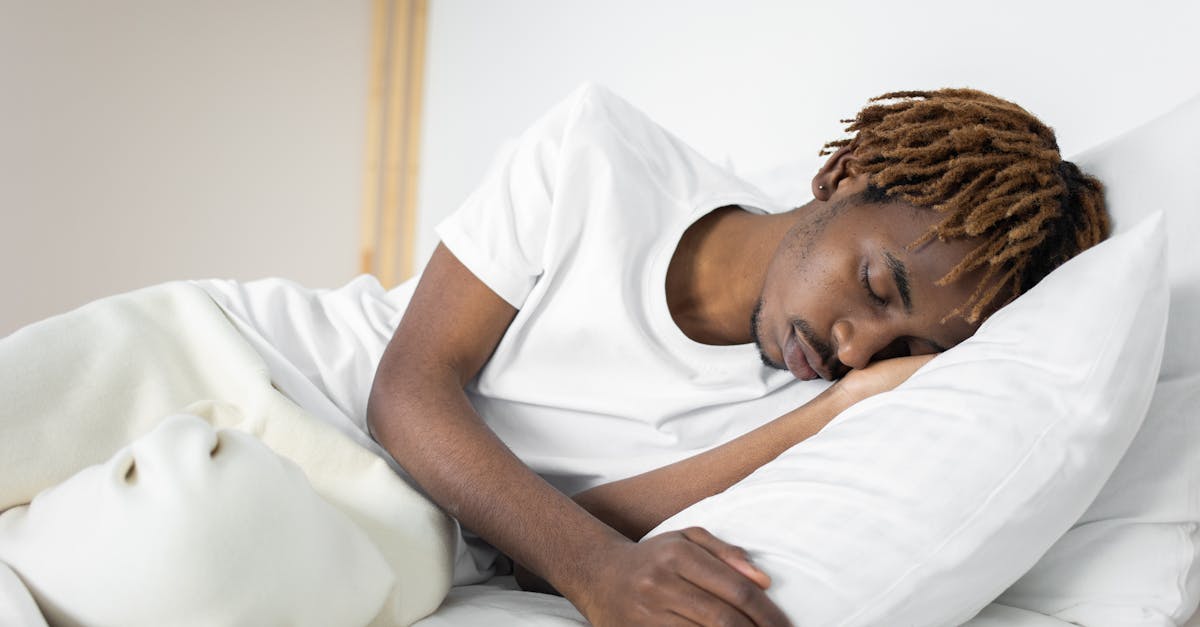Suffering from lower back pain and restless nights? You’re not alone.
In Short: Struggling to find the right sleep positions for back pain? Discover how to alleviate discomfort caused by lower back pain with effective strategies for a restful night. Proper positioning not only relieves your symptoms but also promotes better spine alignment, providing greater comfort and support. Experience improved rest and waking vitality with these simple adjustments. Reclaim your health and wellness at Pulse Align Clinics. BOOK YOUR APPOINTMENT today!
Are you struggling with lower back pain and poor posture?
Discover the best sleep positions for back pain and let Pulse Align guide your comfort. Poor sleeping posture can exacerbate issues like sciatica, herniated disc, and lumbar pain affecting your daily activities. Studies show that a significant percentage of adults endure lower back pain, often due to improper sleeping habits. Implementing proper sleep positions, in conjunction with lower back pain exercises, can be instrumental in achieving low back pain relief. By addressing the root causes of discomfort and promoting effective core strengthening exercises, Pulse Align empowers you to reclaim your health with posture correction and alignment strategies.

Finding the right sleeping position is crucial for overall well-being, particularly when it comes to posture improvement and achieving optimal balance in the body. Poor sleeping habits can lead to discomfort and tension, but implementing a few adjustments might help create a more restorative night’s rest. As you explore your options, consider how neuromuscular recalibration can play a role in your journey towards better sleep.
Introducing Pulse Align’s Gentle Approach
At Pulse Align, we understand the connection between sleep and overall health. Our approach emphasizes muscle tone and gentle stimulation to promote the body’s natural balance. By focusing on enhancing symmetry in muscle tone, our services provide valuable support for anyone seeking to improve their posture and physical well-being without directly targeting specific discomforts. Embracing a gentle and technological approach, we advocate for methods that allow the body to reclaim its natural function.
Benefits of a Holistic Wellness Approach
Our focus at Pulse Align is not just about addressing discomfort but rather exploring the holistic benefits of positioning techniques. Employing the methods that honor the body’s natural healing abilities allows clients to discover the profound effects of posture correction. Our clients have shared experiences of increased comfort, noting a remarkable ability to reduce neck tension and enhance flexibility through our gentle recalibration practices.
Client Experiences with Pulse Align
Many have felt the positive impacts of incorporating Pulse Align into their well-being journey. Clients have expressed how the experience not only aids in improving posture naturally but also complements their everyday activities. They describe feeling a sense of relief and the ability to engage in daily tasks with greater ease, all achieved through our non-invasive techniques.
Join the Pulse Align Family
If you’re eager to enhance your health and posture through a supportive environment, consider booking a consultation at your nearest Pulse Align clinic. We proudly serve areas including Montreal, La Prairie, Terrebonne, Chicoutimi, Charlesbourg, Saint-Jérôme, Châteauguay, Sainte-Marie, Les Escoumins, Granby, and Panama City. Remember, while our services complement your wellness journey, they should always be approached with the supervision of your healthcare team. Step towards balance and well-being today!
- Back Sleeping: Place a pillow under your knees to relax back muscles.
- Side Sleeping: Bend your knees slightly and use a body pillow for support.
- Fetal Position: Curl into a loose ball, which can ease pressure on the spine.
- Supine with Towel Support: Roll a towel and place it under your lower back for extra support.
- Avoid Stomach Sleeping: This position disturbs normal spinal alignment.

Finding the right sleep positions for back pain is essential for anyone suffering from lower back pain, sciatica, or related issues. Whether it’s managing lumbar pain from a herniated disc or seeking low back pain relief, the right posture during sleep can support neuromuscular health and facilitate recovery. This article explores beneficial sleep positions, ensuring you wake up feeling rejuvenated, while also incorporating core strengthening and heightening awareness of weight management practices that may further alleviate discomfort.
Call to Action
Take charge of your comfort and health today; consider booking a consultation with Pulse Align to explore personalized exercise plans and therapies tailored to your unique needs. Empower yourself with knowledge on how to enhance your sleeping posture and improve your overall well-being.
Best Sleep Positions for Lower Back Pain Relief
1. Side Sleeping with a Knee Pillow
Sleeping on your side is often recommended for those experiencing back pain. By introducing a pillow between your knees, you can maintain pelvic tilts which support lumbar synchronization. This position promotes overall symmetry in body alignment and reduces stress on your spine.
| Sleep Position | Benefits |
| On Your Back | Helps maintain the natural curve of your spine; placing a pillow under the knees can enhance relaxation. |
| On Your Side | Promotes spinal alignment; using a body pillow or placing a pillow between knees can provide extra support. |
| Fetal Position | Flexing the knees toward your chest can alleviate pressure on the lower back and assist with body balance. |
| Elevated Legs | Keeping legs elevated on a pillow can enhance comfort and improve circulation, fostering a sense of ease. |
| Avoiding Stomach Sleeping | Reduces strain on the neck and lessens pressure on the back, aiding natural body alignment. |
| Body Pillow Technique | Using a body pillow while sleeping can provide additional support and improve posture throughout the night. |
| Firm Mattress | A supportive mattress can maintain spinal health and facilitate better sleep quality, promoting overall wellness. |
| Pillow Height Adjustment | Choosing the right pillow height ensures neck alignment with the spine, fostering a restful sleep. |
| Gradual Position Changes | Altering positions slowly can help the body recalibrate and adapt, ensuring comfort and balance. |
| Regular Sleep Schedule | Maintaining a consistent sleep routine promotes deeper sleep, contributing to recovery and well-being. |

Embracing Wellness: Client Experiences with Pulse Align
Clients across various regions, including La Prairie and Sainte-Marie, have shared transformative experiences with Pulse Align’s unique approach to enhancing sleep positions for back pain. Many have reported significant improvements in their overall well-being, attributing this positive change to the gentle yet effective recalibration methods offered by Pulse Align.
Residents of Mont-Royal have noted how the tailored strategies provided by Pulse Align have empowered their bodies to align naturally, fostering improved comfort during sleep. This facilitated healing has resonated with clients who have struggled with chronic pain, as they discover a viable pathway to recovery and balanced body function.
In Châteauguay, clients emphasize how the integration of Pulse Align’s techniques into their daily routines has led to remarkable enhancements in their sleep quality. The holistic nature of the services available at Pulse Align caters to not only the physical aspects of pain management but also the emotional and psychological components of recovery.
Similarly, those in Terrebonne have expressed gratitude for the supportive environment Pulse Align fosters, where they feel understood and encouraged in their journey towards natural wellness. The collaborative approach taken by Pulse Align ensures that clients are supported in tandem with their healthcare teams, allowing for a comprehensive wellness journey.
For families in Deux-Montagnes and Chicoutimi, the benefits of embracing Pulse Align’s methodologies can lead to a harmonious lifestyle, allowing for better management of back pain through improved sleeping positions. It’s clear that the community recognizes the value of restoring balance and accessing wellness solutions that truly work.
Explore how you, too, can benefit from the revelatory experiences of our clients. Visit Our Clinics to find a Pulse Align location near you and start your journey towards naturally reclaiming your health and enhancing your comfort.
Discovering the right sleeping positions can significantly enhance your experience and relief when dealing with lower back pain. Individuals often overlook the impact of sleep posture on pain management. This guide will delve into effective sleeping positions and their implications for your back health.
When sleeping on your back, consider placing a pillow under your knees. This simple adjustment helps to relax your back muscles and maintain the curve of your lower back, providing much-needed support. If additional support is necessary, a small, rolled towel under your waist can enhance your comfort. Your pillow should also keep your neck aligned with your chest and back.
Sleeping on your side has its own set of benefits. By adopting a side-sleeping position with a partial bend in the knees, you can encourage spinal alignment and alleviate discomfort. Using a body pillow or a thin pillow under your knees can further maintain this alignment throughout the night. Choosing a supportive mattress or a mattress topper designed for back pain can also contribute significantly to your sleeping comfort.
Avoiding specific positions is crucial in managing lower back pain. Sleeping on your stomach can exacerbate issues by flattening your spine’s natural curvature and placing unnecessary pressure on your back muscles. Instead, opt for sleeping on your back or side, and ensure that your sleeping surface is conducive to maintaining proper alignment.
Our Mission
At Pulse Align, our mission is to deliver evidence-based, client-centered treatments that address the underlying causes of pain and dysfunction. By integrating advanced techniques and technologies, we strive to empower each person to take control of their health, ensuring a high standard of care, lasting relief, and an improved quality of life.
Discover the Benefits of TAGMED’s Neurovertebral Decompression Technology
TAGMED offers a revolutionary solution through its advanced Spinal Decompression Therapy, designed specifically for patients facing chronic pain and symptoms related to moderate-to-severe disc issues, including herniated discs, bulging discs, and spinal stenosis. This non-surgical approach effectively reduces pressure on affected discs and nerves, enhancing mobility and alleviating pain while supporting the body’s natural healing process. If other therapies have plateaued in effectiveness, consider how TAGMED’s evidence-based decompression technique could help you reclaim an active, comfortable life.
Have you tried conventional treatments and still struggle with persistent back pain due to a severe disc condition?
Mechanism of Action
TAGMED’s neurovertebral decompression technology applies a controlled and progressive traction force to the spine. This innovative method increases the space between vertebrae, reducing the pressure on intervertebral discs and nerve roots while promoting enhanced fluid circulation in the targeted areas. As a result, inflammation decreases, pain alleviates, and individuals receive a reliable, non-invasive solution for chronic back pain and other related issues.
Specific Benefits
This non-invasive approach has shown significant effectiveness in relieving chronic pain linked to conditions such as herniated discs, spinal stenosis, and degenerative disc disease. By reducing nerve structure pressure and optimizing fluid circulation around the discs, patients can experience faster recovery times and improved quality of life. Many seeking lasting relief from persistent discomfort find this therapy particularly beneficial.
Comparison with Other Treatments
When compared to conventional treatments such as pain medications, corticosteroid injections, and surgery, TAGMED’s neurovertebral decompression stands out as a superior option. This method avoids invasive procedures, minimizes medication-related risks, and often offers a quicker path to recovery. Patients can experience the therapeutic benefits without risking complications associated with traditional interventions.
Case Studies or Testimonials
Many patients have reported significant improvements after undergoing TAGMED’s neurovertebral decompression therapy. Testimonials highlight lasting pain relief, a quicker return to daily activities, and reduced reliance on pharmaceuticals. These firsthand accounts demonstrate the tangible results and practical advantages of this therapeutic approach, providing hope for those suffering from chronic pain and related symptoms.
By choosing TAGMED, patients find an evidence-based alternative to managing pain and discomfort effectively while supporting their journey to recovery.
Finding the right sleep position is essential for managing back pain effectively. Implementing strategies such as sleeping on your side with a partial bend in the knees or placing a pillow under your knees while sleeping on your back can significantly enhance comfort levels during sleep. Through these simple adjustments, you can support your body’s natural alignment and enjoy a more restful night.
At Pulse Align, we emphasize the benefits of posture correction and provide support for individuals seeking natural and holistic approaches to wellness. Our clients have shared positive experiences, highlighting not only the reduction of their discomfort but also an increase in mobility and overall well-being. By focusing on your body’s unique needs, we promote a gentle and non-invasive path to improved health, encouraging self-recovery.
Don’t wait to take charge of your health journey. Schedule your consultation now and discover how Pulse Align can help you achieve unparalleled comfort and well-being. With our emphasis on holistic health and natural pain relief, you are one step closer to experiencing life without the constraints of pain. Join our community of individuals reaping the benefits of neuromuscular recalibration and embracing a brighter, pain-free future.

Do you suffer from a chronic condition that responds little or not at all to conservative treatments?
In today’s world, many individuals experience discomfort and tension arising from their daily activities and lifestyles. Pulse Align offers a non-invasive, innovative method designed to help restore the body’s natural balance and posture through gentle, imperceptible pulses. By encouraging the body to recalibrate itself, this approach not only fosters an enhanced sense of well-being but also aims to alleviate muscle and joint tension, addressing the subjects of discomfort from a natural perspective.
At Pulse Align, the focus is not on pain but rather on helping the body to recalibrate itself naturally. This gentle process often results in remarkable improvements in comfort and posture for clients. It allows individuals to better engage with their daily lives, supporting enhanced mobility and overall vitality. By aligning the body’s natural processes, Pulse Align plays a pivotal role in fostering a state of wellness without direct intervention.
The personalized approach of Pulse Align resonates through the positive experiences shared by clients. Testimonials reveal notable improvements in tension in the neck and back, as well as significant enhancement in overall well-being. Clients have expressed gratitude for the way Pulse Align has helped recalibrate their comfort levels, leading to a more balanced life. These uplifting stories reflect not only individual satisfaction but also showcase the effectiveness of a natural wellness approach.
We invite you to discover more about Pulse Align by visiting our website, where you can find nearby locations in cities like La Prairie, Mont-Royal, and Terrebonne, or even further afield. Booking a consultation for yourself or your family is just a click away. Remember, Pulse Align complements, but does not replace, medical care. We work alongside your healthcare team to ensure a holistic approach to wellness. Our services are safe for families, including children and pregnant women, making Pulse Align a suitable choice for individuals seeking family-friendly support on their wellness journeys.
Experience the gentle art of recalibration with Pulse Align. Our cutting-edge technology is designed to restore symmetry in muscle tone, naturally reducing joint tension while offering superior quality, personalized services tailored to each client’s specific needs. To learn more about our offerings and to book an appointment, visit our website: Pulse Align. Your journey to enhanced comfort and balanced well-being begins here.
Frequently Asked Questions
Low Back Pain, sciatica
Can I cycle with low back pain?
Yes, if pain is not acute. Adjust the saddle and handlebars and start with short rides.
Can sciatica disappear spontaneously?
Yes, in many cases sciatica improves within a few weeks with conservative treatment.
Is ice useful for acute sciatica?
Ice can reduce inflammation and acute pain initially, alternating with heat can be beneficial.
Is spinal decompression effective?
Some decompression techniques can relieve disc pressure, but evidence varies.
Does acupuncture help?
Some find pain relief with acupuncture, but effectiveness varies by individual.
Do anti-inflammatories help sciatica?
They may reduce pain and inflammation temporarily but don’t treat the underlying cause.
Do muscle relaxants help?
They may ease muscle spasms and pain short term but are not a long-term solution.
Are cortisone injections effective?
They can temporarily reduce pain and inflammation, but they’re not a long-term solution.
What is low back pain?
It’s pain localized in the lower back, around the lumbar vertebrae.Is Pilates recommended?
Yes, Pilates strengthens the deep core muscles, improves posture, and helps prevent and relieve back pain.
Louise Rousseau knows the toll low back pain can take on daily life—from struggling to tie your shoes to missing out on cherished activities. As a Low Back Pain Awareness Advocate at Pulse Align, Maryse blends compassion with the latest insights in pain relief to offer readers a trusted roadmap toward recovery. Her writing is shaped by heartfelt understanding and grounded in research, empowering others to navigate their own healing journeys. By fostering open dialogue and advocating for accessible solutions, Maryse champions a community where no one’s voice—or hope—is lost to pain.
Medical Disclaimer
The information and advice provided on this site do not replace the advice, diagnosis, or treatment of a healthcare professional. Please note that the author of this article is neither a doctor nor a specialist in a medical specialty as defined by the Collège des médecins du Québec. Manual medicine, functional medicine, and sports medicine as described on this site exclude any medical treatment or diagnosis made by a doctor or medical specialist. Always consult your doctor for any medical questions. For more details, please read our complete Legal Notice.




